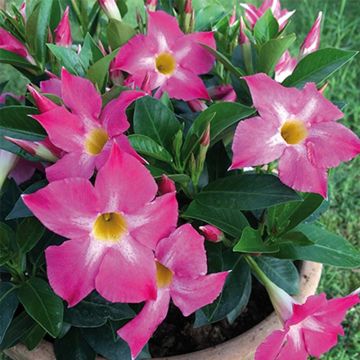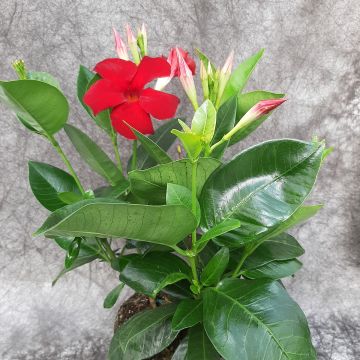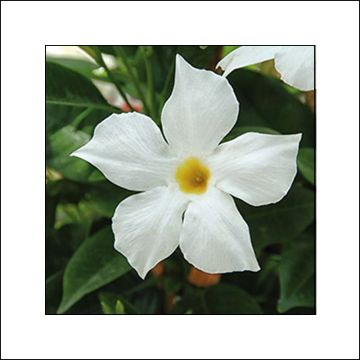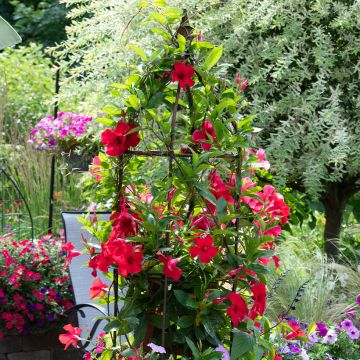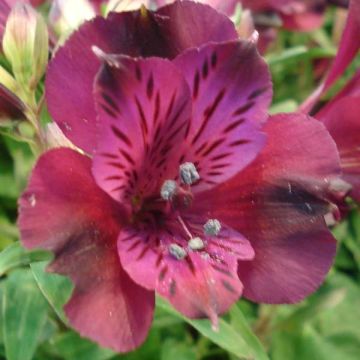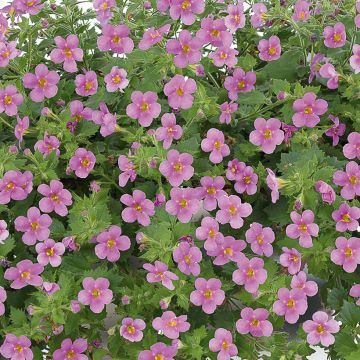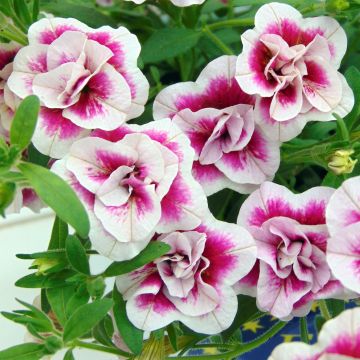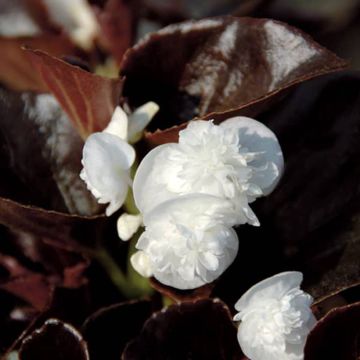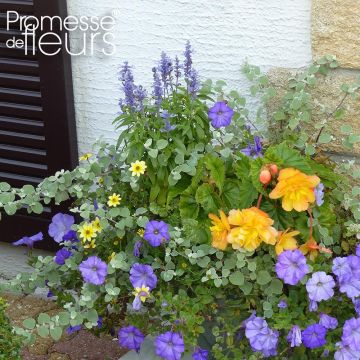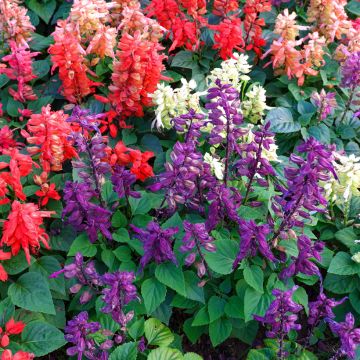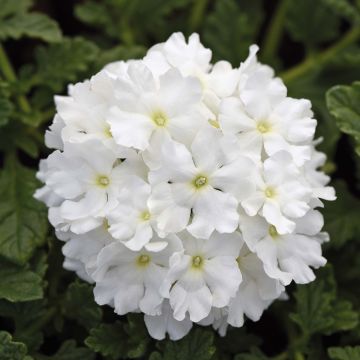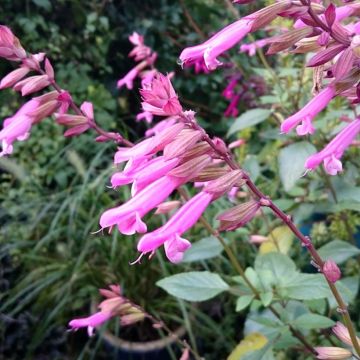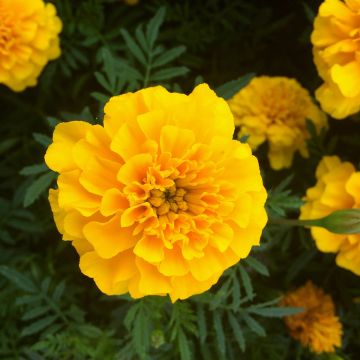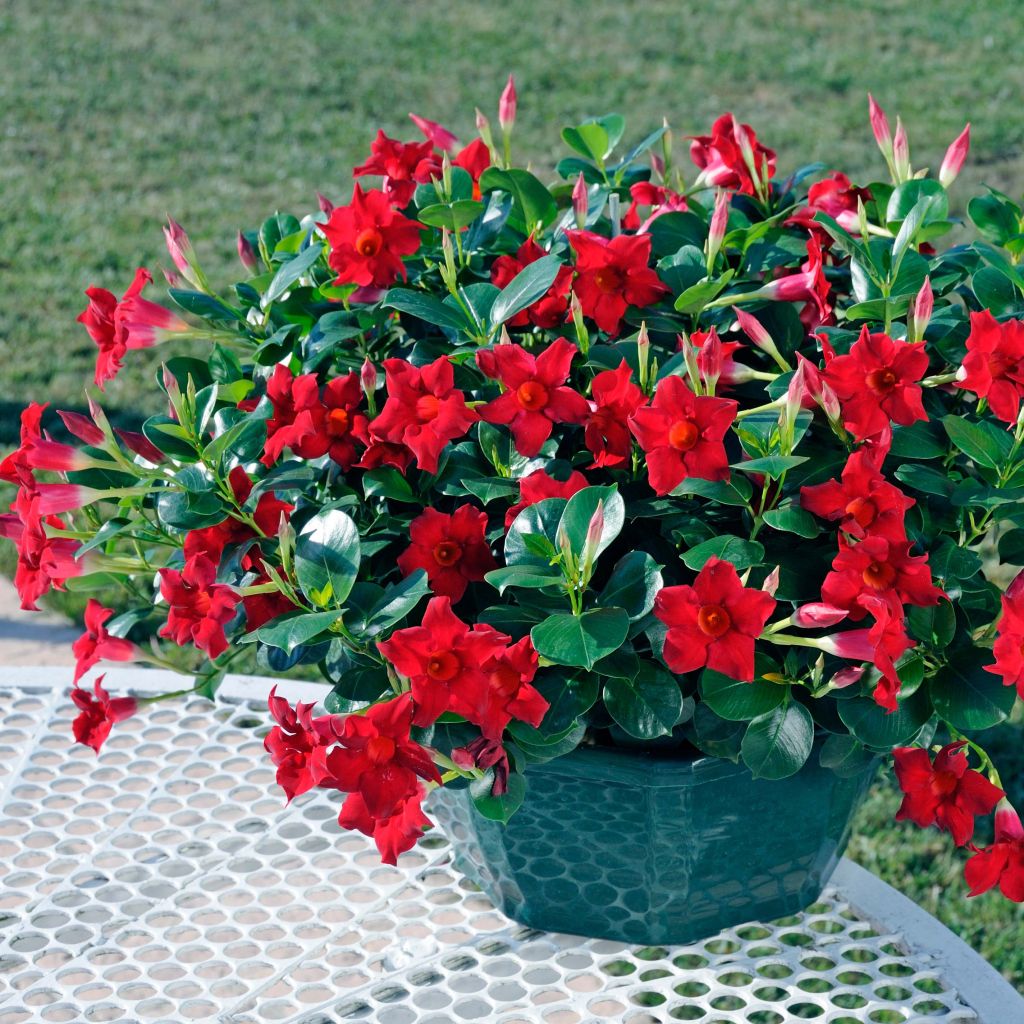

Dipladenia Diamantina Jade Scarlet
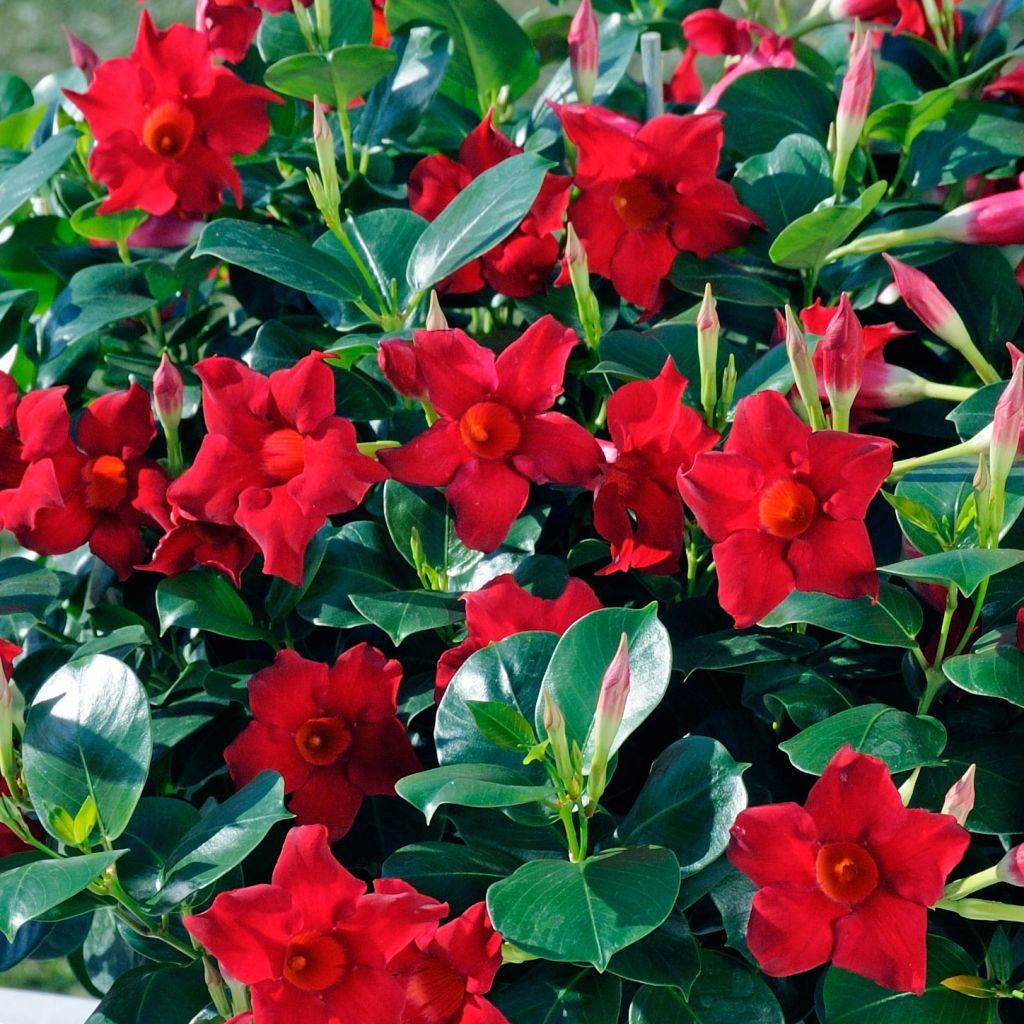

Dipladenia Diamantina Jade Scarlet
Dipladenia Diamantina Jade Scarlet
Dipladenia x sanderi Diamantina® Jade Scarlet
Mandevilla
This plant carries a 6 months recovery warranty
More information
We guarantee the quality of our plants for a full growing cycle, and will replace at our expense any plant that fails to recover under normal climatic and planting conditions.
From €5.90 for pickup delivery and €6.90 for home delivery
Express home delivery from €8.90.
From €5.90 for pickup delivery and €6.90 for home delivery
Express home delivery from €8.90.
Does this plant fit my garden?
Set up your Plantfit profile →
Description
The Dipladenia or Mandevilla Diamantina Jade Scarlet is a delightful little climbing plant, very floriferous and resourceful, able to adapt to being in a large pot, a planter, or even in the ground. It tirelessly produces beautiful star-shaped flowers in a spectacular scarlet red, nestled among shiny dark green leaves, until the first frost. The Diamantina series Dipladenia are generous but frost-tender plants, which will easily survive the winter behind a bay window, in a bright conservatory or a slightly heated greenhouse, and will keep you company for many years.
Mandevillas, named in honor of diplomat and gardener Henry Mandeville, are fast-growing climbing plants, mostly native to the tropical forests of the Serra de Orgaos, near Rio de Janeiro in Brazil. Growing at high altitudes, these tropical plants thrive in temperate climates if spared from frost, in partial shade or dappled light in summer. In the 1970s Robert Lannes, a French horticulturist based in Tarn et Garonne, was the first to take an interest in hybridizing these plants of immense potential. Years of research and selection have resulted in particularly floriferous varieties, more compact, with various colours, that are easy to grow for amateur gardeners.
The Diamantina series, derived among others from Mandevilla sanderi, produces plants with a compact habit well suited for pot cultivation and stands out with a wide range of colours, even offering some new shades.
'Diamantina Jade Scarlet'has a bushy habit but it can be trained as a climbing plant. Its twining, woody stems will happily work themselves around a provided support. It reaches an average height of 85cm (33.5 in) with a spread of 45cm (17.7 in), and grows rapidly. Its beautiful large flowers, 6cm (2.4 in) in diameter, are composed of 5 large lobes of scarlet red colour overlapping like the blades of a propeller. Grouped in small clusters, they bloom continuously from May until the first frost. The foliage, evergreen and leathery, is composed of small entire leaves, dark green, arranged oppositely. The lamina, thick and leathery, oval to elliptical in shape, measures 5 to 6cm (2 - 2.4 in) in length and has a shiny upper surface. This plant has fine roots and large tuberous roots, veritable storage organs that contain starch and water, allowing the plant to withstand drought quite well.
Mandevilla is often used for terrace, balcony, or patio decoration, to cover a pergola or trellis, alone or in a mix of colors. This Diamantina Jade Scarlet variety, resistant to heat and drought and capable of forming a beautiful bushy clump, can also be planted in a large flowerpot placed in isolation, even on a sunny terrace or balcony. It can be combined with e.g. a dark blue Plumbago capensis, black-eyed Susans, passionflowers. Planting in the ground (in lightened soil) should be reserved only for regions spared from frost.
Please note that our young plants in mini-plugs are professional products intended for experienced gardeners: upon receipt, transplant and store them under shelter (veranda, greenhouse, frame) at a temperature above 14C° for a few weeks before planting outside once all risk of frost has passed.
Dipladenia Diamantina Jade Scarlet in pictures
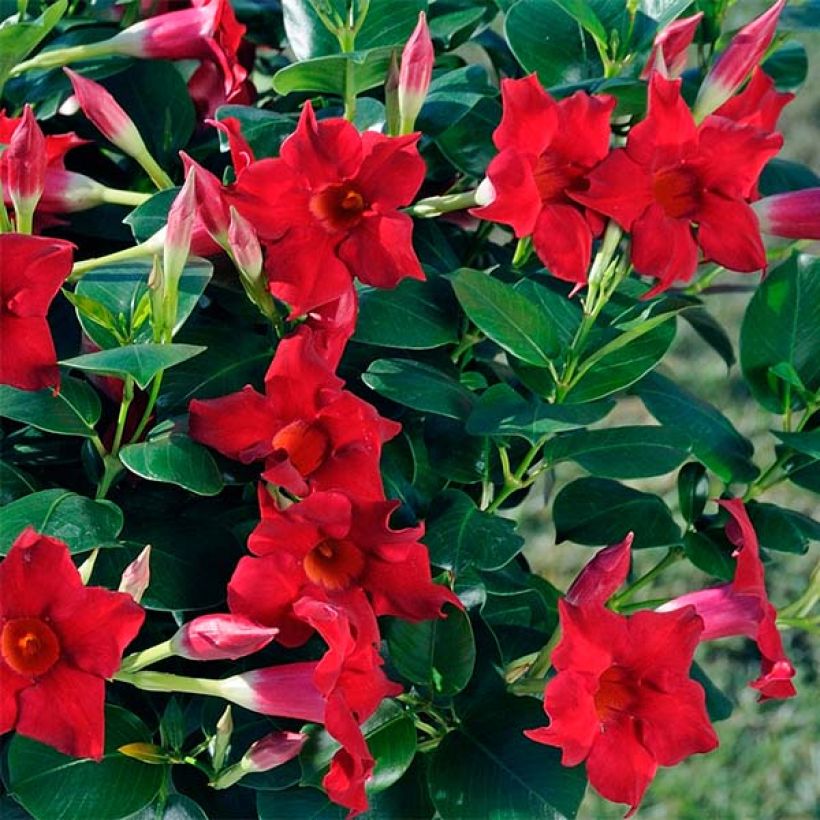

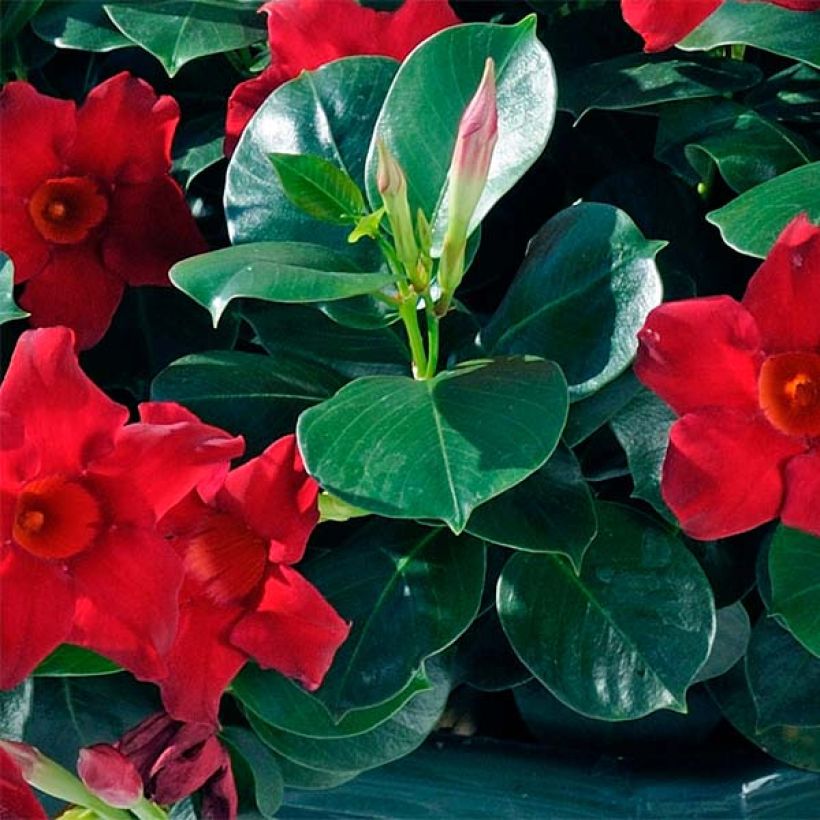

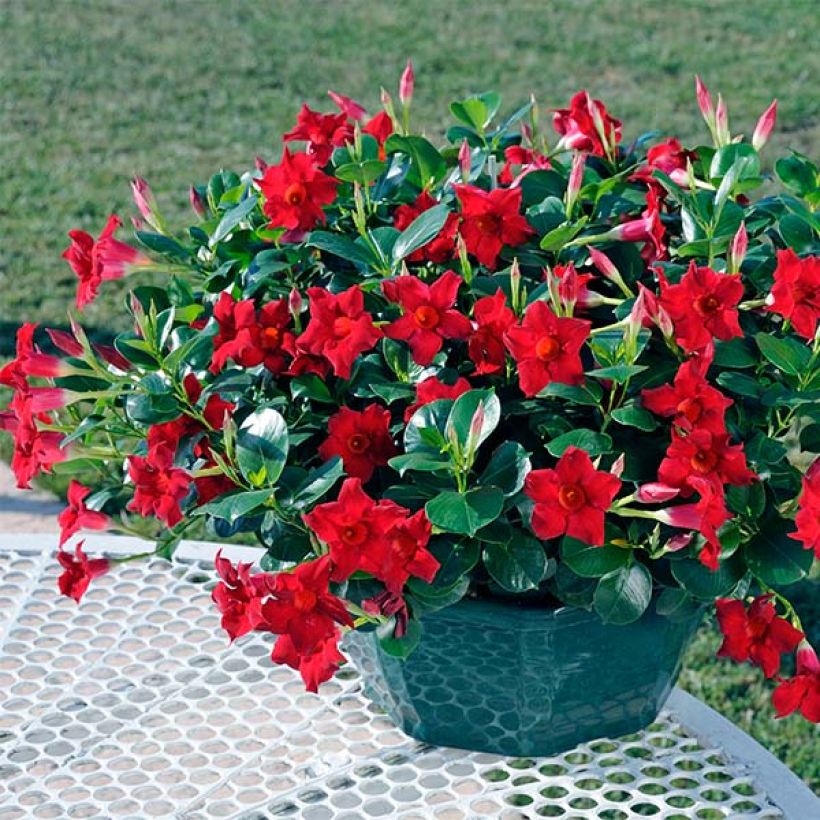

Plant habit
Flowering
Foliage
Botanical data
Dipladenia
x sanderi
Diamantina® Jade Scarlet
Apocynaceae
Mandevilla
Cultivar or hybrid
Other Dipladenia or Mandevilla
Planting and care
Plant your Dipladenia Diamantina Jade Scarlet in the ground after the last frost. The ideal location is a sunny spot ideally with some shade during the hottest part of the day in summer. Plant them in a soil enriched with compost and coarse sand. You can also plant them in pots placed in a protected area, which you can bring out during the warmer days. Dipladenia plants prefer a well-drained and moderately dry soil, not necessarily very rich to avoid excessive foliage growth at the expense of flowering. Water moderately. In pots, regular watering is necessary in summer, as well as the application of flowering plant fertiliser. Allow the soil to dry between waterings. You can keep your Dipladenia plants by bringing them indoors under a veranda or a cold greenhouse during winter. They don't tolerate temperatures below 5°C well.
Growing them in the ground all year round is only possible in regions completely unaffected by frost.
Planting period
Intended location
Care
-
, onOrder confirmed
Reply from on Promesse de fleurs
Plug plants - Annuals
Haven't found what you were looking for?
Hardiness is the lowest winter temperature a plant can endure without suffering serious damage or even dying. However, hardiness is affected by location (a sheltered area, such as a patio), protection (winter cover) and soil type (hardiness is improved by well-drained soil).

Photo Sharing Terms & Conditions
In order to encourage gardeners to interact and share their experiences, Promesse de fleurs offers various media enabling content to be uploaded onto its Site - in particular via the ‘Photo sharing’ module.
The User agrees to refrain from:
- Posting any content that is illegal, prejudicial, insulting, racist, inciteful to hatred, revisionist, contrary to public decency, that infringes on privacy or on the privacy rights of third parties, in particular the publicity rights of persons and goods, intellectual property rights, or the right to privacy.
- Submitting content on behalf of a third party;
- Impersonate the identity of a third party and/or publish any personal information about a third party;
In general, the User undertakes to refrain from any unethical behaviour.
All Content (in particular text, comments, files, images, photos, videos, creative works, etc.), which may be subject to property or intellectual property rights, image or other private rights, shall remain the property of the User, subject to the limited rights granted by the terms of the licence granted by Promesse de fleurs as stated below. Users are at liberty to publish or not to publish such Content on the Site, notably via the ‘Photo Sharing’ facility, and accept that this Content shall be made public and freely accessible, notably on the Internet.
Users further acknowledge, undertake to have ,and guarantee that they hold all necessary rights and permissions to publish such material on the Site, in particular with regard to the legislation in force pertaining to any privacy, property, intellectual property, image, or contractual rights, or rights of any other nature. By publishing such Content on the Site, Users acknowledge accepting full liability as publishers of the Content within the meaning of the law, and grant Promesse de fleurs, free of charge, an inclusive, worldwide licence for the said Content for the entire duration of its publication, including all reproduction, representation, up/downloading, displaying, performing, transmission, and storage rights.
Users also grant permission for their name to be linked to the Content and accept that this link may not always be made available.
By engaging in posting material, Users consent to their Content becoming automatically accessible on the Internet, in particular on other sites and/or blogs and/or web pages of the Promesse de fleurs site, including in particular social pages and the Promesse de fleurs catalogue.
Users may secure the removal of entrusted content free of charge by issuing a simple request via our contact form.

































